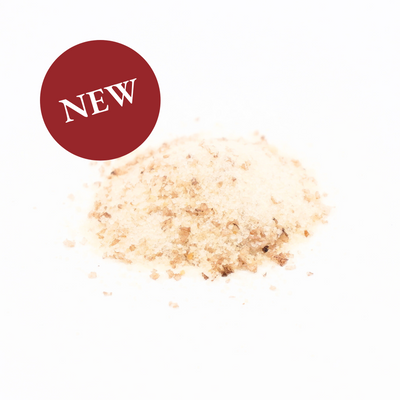How are Evoolution's Dark and White Balsamic Vinegars Made?
At Evoolution, our balsamic vinegars are grouped into two categories: dark and white balsamic vinegars. Both types are technically classified as "balsamic condiments," as they are slightly different than the highly-regulated PDO (Protected Designation of Origin) "Traditional Balsamic Vinegar," even though they are produced in the same areas of Italy. The small differences in their respective production processes means that our balsamic vinegars are much more accessible in terms of both quantity and price.
How our Balsamic Vinegar is Made
Both our dark and white balsamic vinegars begin in much the same way: with grape must (crushed grapes, including the skins, stems, and seeds) being cooked over an open fire to a specific density and consistency. Typically, Trebbiano and occasionally Lambrusco grapes are used, grown in Modena or Reggio Emilia, Italy; the same place where the balsamics themselves are also produced. For dark balsamic vinegars, the cooked must is inoculated with a small amount of aged red wine vinegar. This step introduces the yeast and acetic bacteria that kickstart the fermentation process, which ultimately produces vinegar.
The mixture is then transferred into different wood-fired barrels, including chestnut, oak, ash, and mulberry, that previously contained aging balsamic vinegars. These groups of barrels are referred to collectively as a battery of barrels and they decrease in size as the balsamic is moved from one barrel to the next during its aging. Our balsamic vinegars are aged using the Solera system of topping up the aging must with younger cooked grape must as the original mixture evaporates over time. The resulting vinegar thickens and gains complexity and character from the wood-fired barrels as it ages for up to 18 years.

In contrast, white balsamic vinegars, which are inoculated with white wine vinegar instead of red, are cooked at a lower temperature, 200 celsius compared to the 400 celsius for our dark balsamics. That difference limits the caramelizing experienced by dark balsamics with the high heat of cooking. The mixture is aged in stainless steel or new oak vessels for up to 12 years. They are sweeter but also slightly more acidic and tend to be sharper than dark balsamic vinegars. White balsamics were created to get around the issue of dark balsamic vinegar discolouring recipes like salads, while still imparting that rich, sweet – tangy flavour.
How to Cook with Balsamic Vinegars
Both white and dark balsamic vinegars are delicious in salad dressings, marinades, bread dipping... you name it! One of the many benefits of balsamic vinegar is that it imparts both sweetness and rich, complex flavour. We even love showcasing our white balsamic vinegars in sparkling water as a refreshing soda! Let your imagination run wild with the tasty possibilities and don't hesitate to ask the staff at your local Evoolution for some inspiration.




Hi Angie, thank you for the questions! For our flavoured balsamic vinegars, the natural flavourings are added after the balsamic has been produced and aged. We recommend that you use your balsamic vinegars up in about 2 years, but we bet you will get through it faster than that!
Thank you for those infos, it is amazing to know. So how do you add the flavors? Also what is the expiry date on it?
Leave a comment